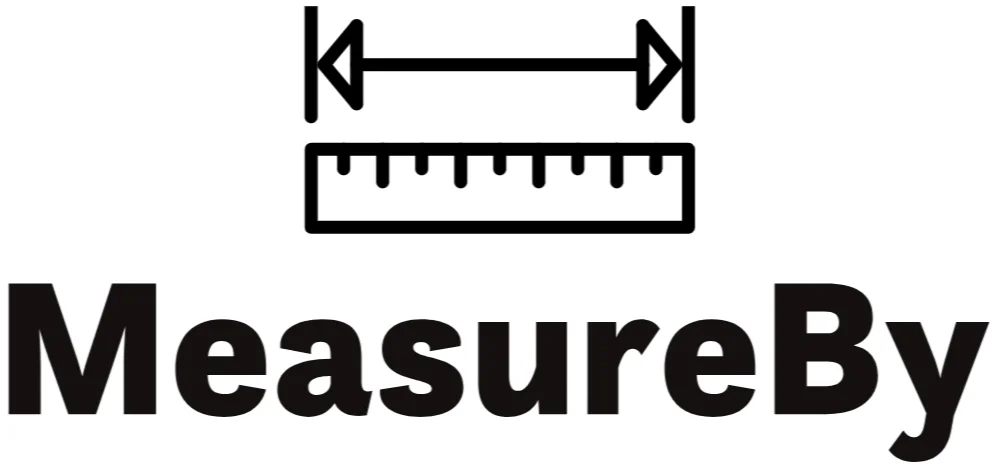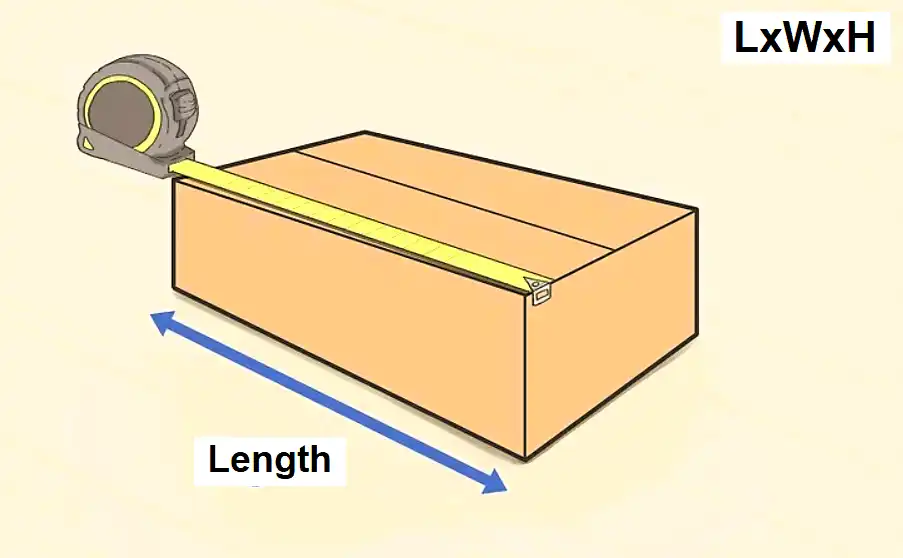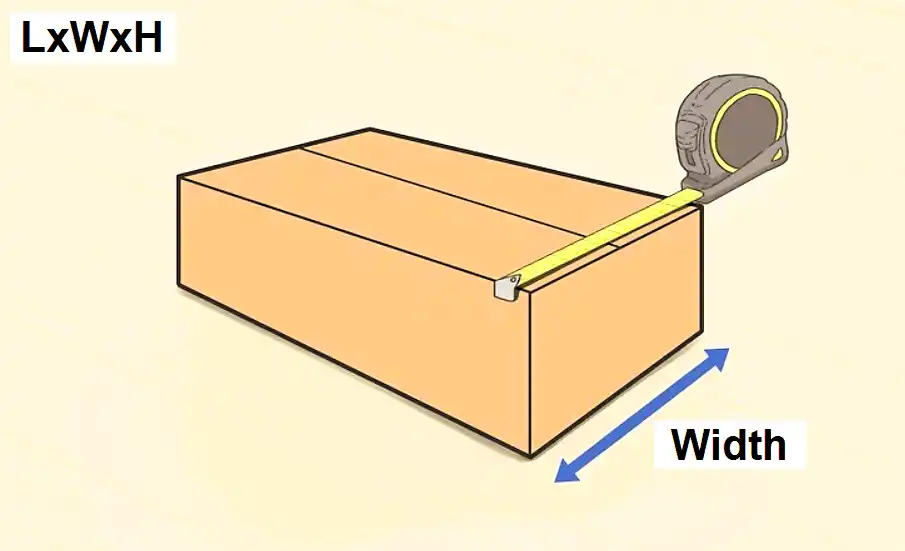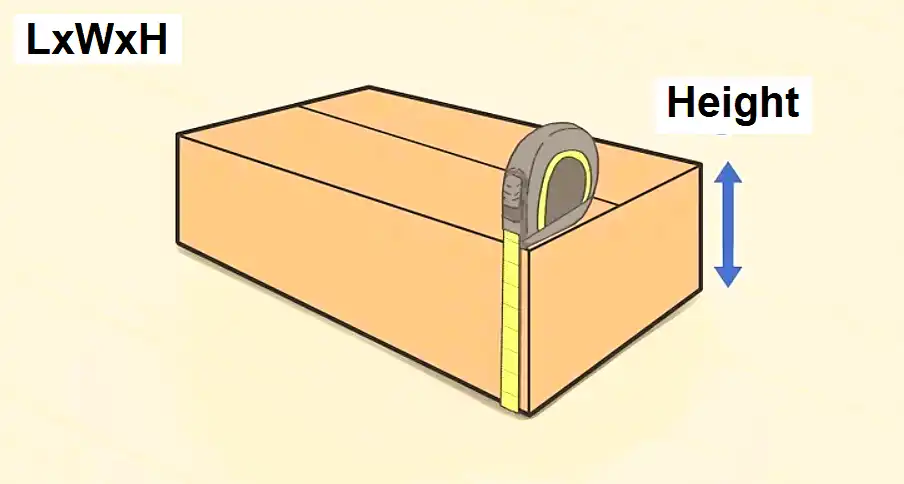How are Dimensions Written? 🤔Length x Width x Height (LxWxH)?
Dimensions are typically written in a specific sequence: Length x Width x Height (LxWxH), which provides a comprehensive understanding of an object’s size and shape in 3D space. This standardized notation is used across various industries, from engineering to e-commerce, and is crucial for accurate product specifications, packaging, shipping, and spatial design.
First off, let’s break it down.
In simple terms, dimensions describe the measurements or extent of something in physical space. They provide a comprehensive understanding of an object’s size and shape. In our 3D world, three dimensions define our space: length, width, and height.
- Length: Length is the longest side of an object. In the case of a box, this would be the longest side running horizontally when the box is on a flat surface.
- Width: Width refers to the shorter horizontal measurement of the box.
- Height: Height is the vertical measurement, extending from the base to the top.
Remember, all measurements are relative to the observer’s position.
This article covers:
How to Write Dimensions?
Writing dimensions may seem straightforward, but there’s an accepted order: Length x Width x Height (LxWxH). This sequence is a universally recognized standard in many industries. Let’s explore why.
The Importance of the Correct Sequence
You know when you’re assembling a piece of flat-pack furniture, and the instructions seem to be written in an alien language?
Imagine how much more complicated it would be if the dimensions were jumbled up. You’d end up with a topsy-turvy piece of furniture that wouldn’t serve its purpose. The sequence LxWxH brings order and clarity, ensuring that everyone is on the same page.
However, this isn’t a hard-and-fast rule. In some industries, such as mechanical engineering, it’s common to see dimensions written as Diameter x Length or even Height x Diameter x Width. The key here is consistency. Once a system is established within a specific industry, it’s essential to stick to it.
The Use of Units
Just as crucial as the order of dimensions is the unit of measurement used. Depending on your geographical location or the industry you’re in, you might use metric units (like meters, centimeters) or imperial units (like inches, feet).
When writing dimensions, it’s important to state these units clearly. After all, a length of “5” could mean 5mm, 5cm, or 5m – and that’s a big difference!
Application of Dimensions: From Engineering to Everyday Life
We encounter dimensions in nearly every aspect of life, from the engineering of complex machinery to the arrangement of furniture in our homes. Let’s explore a few examples.
Engineering
Engineers use dimensions to create detailed models and plans. Whether they’re designing a tiny component of a machine or a towering skyscraper, dimensions are key. They allow for precision and accuracy, ensuring that the final product is functional, safe, and reliable.
E-Commerce and Shipping
Have you ever ordered a piece of furniture online, only to find it doesn’t fit through your door?
Proper dimensioning can prevent these mishaps. E-commerce businesses provide dimensions to inform customers about the size of the product while shipping companies use these dimensions to calculate costs and plan delivery routes.
Interior Design
In interior design, the proper use of dimensions can transform a space. Designers take detailed measurements of each room and piece of furniture, ensuring that everything fits together harmoniously.
A well-planned room not only looks aesthetically pleasing but also enhances functionality and comfort.
Diving Deeper: Understanding Cubic Dimensions
But dimensions aren’t just about length, width, and height. There’s a fourth dimension we often overlook: volume.
When we multiply length, width, and height, we get volume, which gives us the total amount of space an object occupies. This concept is especially crucial when dealing with storage and packaging.
Advanced Applications of Dimensions: 2D vs 3D
Dimensions aren’t just about boxes or rooms; they’re used to describe everything from flat images to complex three-dimensional structures. Let’s examine how.
2D Objects: Length x Width
When dealing with two-dimensional objects, such as a painting or a sheet of paper, we only consider length and width. These objects have no perceptible depth, so height doesn’t come into the equation.
However, don’t be fooled; even in 2D, dimensions are essential. For instance, graphic designers need to know the exact dimensions of their digital canvas before creating an eye-catching design.
3D Objects: Length x Width x Height
As we’ve already established, three-dimensional objects have length, width, and height. From the furniture in your home to the smartphone in your pocket, these dimensions describe our tangible world.
Beyond 3D: Exploring Higher Dimensions
While humans can only perceive three dimensions, theoretical physicists posit the existence of higher dimensions. In string theory, for instance, the universe is considered to be composed of up to 11 dimensions!
Although beyond the scope of everyday understanding, these concepts remind us that dimensions can be a gateway to comprehending the universe.
Special Cases in Dimension Notation
While the standard notation is LxWxH, specific fields, and situations require alternative approaches. Let’s explore a few.
Diameter in Circular Objects
When dealing with circular objects, diameter comes into play. Diameter is a straight line passing through the center of a circle, connecting two points on its edge. For circular or cylindrical objects, dimensions are often expressed as Diameter x Height.
Inverted Notation for Screen Sizes
Ever wondered how screen sizes are measured? Televisions, monitors, and mobile device screens are described by their diagonal length. This value is measured from one corner to the other, ignoring width and height altogether.
So, the next time you see a 55″ TV, remember that the 55″ refers to the diagonal length of the screen.
The Future of Dimensions: 3D Printing and Virtual Reality
Dimensions are evolving along with technology. In emerging fields like 3D printing and virtual reality, understanding and using dimensions are more critical than ever.
3D Printing
3D printers bring dimensions to life by creating physical objects from digital designs. The design process begins on a computer, where designers model their object in three dimensions.
The 3D printer then reads this digital model and lays down successive layers of material to build the object. Without a clear understanding of dimensions, this innovative technology wouldn’t be possible.
Virtual Reality
In the world of virtual reality (VR), dimensions are experienced rather than measured. VR systems use complex sensors to track the movement of users in three-dimensional space, creating an immersive, interactive environment.
Here, a comprehension of dimensions is crucial for designers to create believable and navigable virtual worlds.
Conclusion: Embracing the Dimensional World
In conclusion, dimensions are written as Length x Width x Height (LxWxH), a sequence that provides essential information about an object’s size and shape in three-dimensional space. This universally accepted notation is a crucial aspect of many fields, from engineering to design, facilitating accurate interpretation and application of measurements in real-world contexts.
Whether you’re arranging furniture, shipping a package, designing a skyscraper, or exploring a virtual world, dimensions are a fundamental part of your process. Understanding how dimensions are written and applied is not just useful, but essential.
So the next time you come across a set of numbers on a box or a product specification, remember the importance of those dimensions and the depth of meaning they carry.



